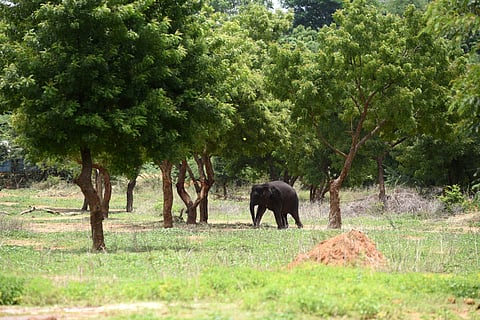

RAIPUR: Chhattisgarh is among those Indian states where the human-wildlife conflict often gets reported, more so around areas close to national parks and wildlife sanctuaries. The conflict is not just a threat to the continued survival of many species but also a danger posed to human beings, livestock and even crop damage in and around the zone of fringe forest areas.
Chhattisgarh forest department during one of its extensive reviews found the non-availability of sufficient food and water besides the human interference in the forest area, that are consequently forcing the wild animals to venture into the farmlands and human habitat leading to loss of lives and agriculture produce.
“The state government based on the review inputs instructed the officials of the department to ensure sufficient food availability for wild animals in the forested terrain. For this, a mega campaign has been launched to facilitate sufficient food availability to wild animals in the forest areas and simultaneously to improve wildlife habitats,” said the principal chief conservator of forest (PCCF) Rakesh Chaturvedi. In the entire ongoing campaign, as many as 7887 Joint Forest Management Committee members of every forest division were engaged from mid-July onward.
Over 46500 kg of fruit seeds have so far been sown in the forested territory that also saw encouraging participation of the local population and the people’s representatives. The technique of seed ball was extensively used.
The Forest Management Committee members have been entrusted with the task to protect the areas and keep the records of germination, growth status and success level of the seeds.
The fruit seeds of mango, black plum, jackfruit, Indian plum, Indian gooseberry among others were publicised in places where the soil conditions were compatible with productivity.
Mostly open, degraded forest, old plantation, lands close to water sources are selected to increase the forest cover by sowing more fruit seeds and growing vegetables. The fruit plants will equally be of advantage for the local inhabitants, the PCCF added. Collection of various fruits and minor forest produce are among the main sources of livelihood and income generation for tribal people.
The state has three tiger reserves and 11 wildlife sanctuaries.
What is a seed ball?
A new and innovative technique to raise seedlings on a large scale with low cost in short period, this consists of seeds enclosed in wet soil and compost and dried-up. Fertile soil, vermi-compost/farm yard manure are used to prepare seed ball in the ratio of 3:1 and the seed is placed inside the ball and dried in shadow. The seed ball is placed in the forest area at suitable locations during rainy season. Close to 1935500 seed balls have been prepared by the forest department during this rainy season and broadcasted in all forest divisions of the state.